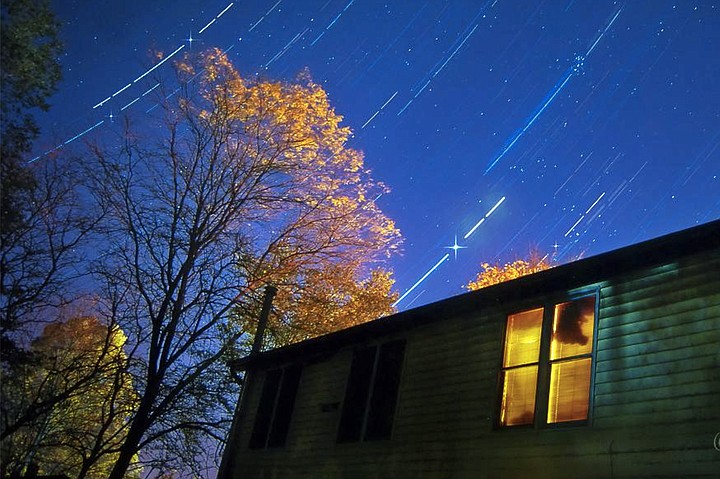 Facebook
Facebook
 X
X
 Instagram
Instagram
 TikTok
TikTok
 Youtube
Youtube

The Tawny Hues Of The Black Oak Tree are just beginning to highlight the slopes of San Diego County’s higher mountains. Named for the dark coloring of its bark, especially when wet, the black oak is the only deciduous oak native to the county. Associating with pines, firs, cedars, various evergreen oaks, and occasionally chaparral, the black oak lends true autumn coloring to mountain ranges such as the Laguna and Palomar mountains.

The Orionid Meteor Shower, one of the year’s five best annual showers, peaks on the mornings of October 21 and 22 (Saturday and Sunday mornings). The Moon, past its first quarter phase, will interfere with the Orionid display this year, but only prior to about 2 am. (The shower is most active during the predawn hours anyway.) For best results, observe the whole sky from a dark location during the hour or two before dawn, roughly 4 to 6 am. Under ideal conditions, you may spot up to 20 meteors per hour. The Orionids “radiate” from the constellation of Orion, and many leave long-lasting trains, or glowing trails. Comet Halley is believed to be responsible for the shower: every year at this time, the earth plows through a stream of icy particles which the comet has shed over the years.


The Tawny Hues Of The Black Oak Tree are just beginning to highlight the slopes of San Diego County’s higher mountains. Named for the dark coloring of its bark, especially when wet, the black oak is the only deciduous oak native to the county. Associating with pines, firs, cedars, various evergreen oaks, and occasionally chaparral, the black oak lends true autumn coloring to mountain ranges such as the Laguna and Palomar mountains.

The Orionid Meteor Shower, one of the year’s five best annual showers, peaks on the mornings of October 21 and 22 (Saturday and Sunday mornings). The Moon, past its first quarter phase, will interfere with the Orionid display this year, but only prior to about 2 am. (The shower is most active during the predawn hours anyway.) For best results, observe the whole sky from a dark location during the hour or two before dawn, roughly 4 to 6 am. Under ideal conditions, you may spot up to 20 meteors per hour. The Orionids “radiate” from the constellation of Orion, and many leave long-lasting trains, or glowing trails. Comet Halley is believed to be responsible for the shower: every year at this time, the earth plows through a stream of icy particles which the comet has shed over the years.
Comments